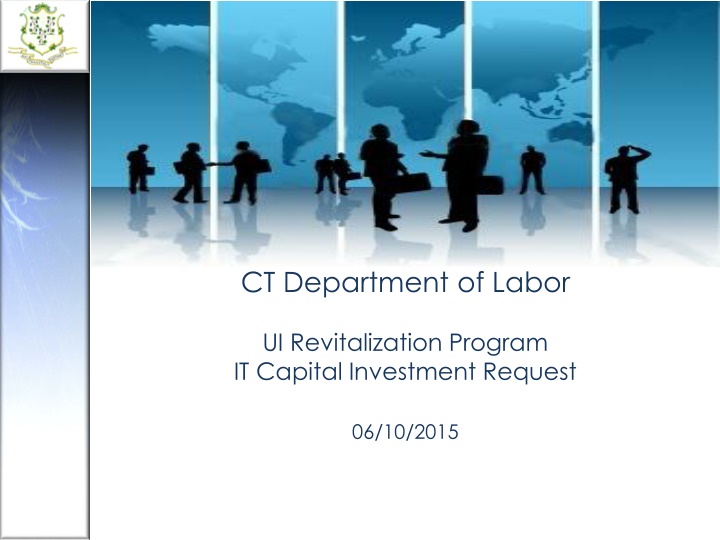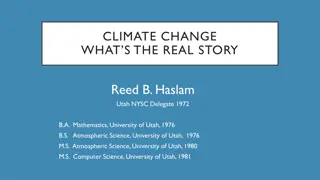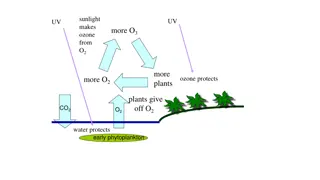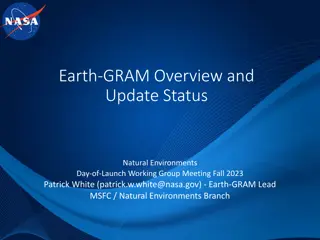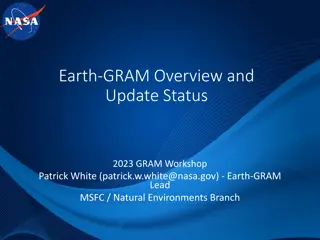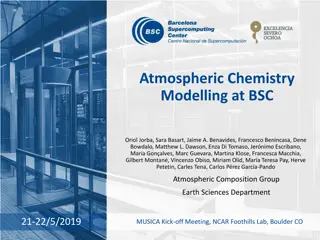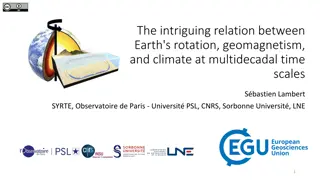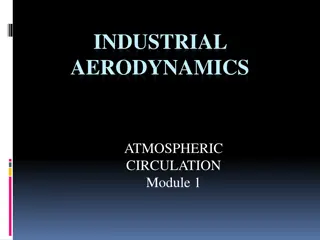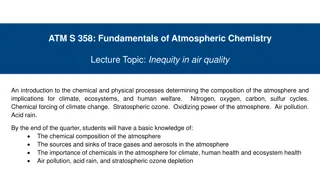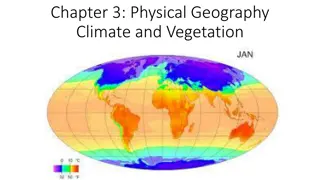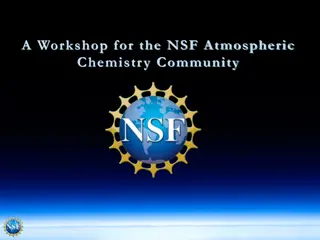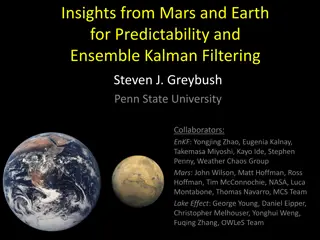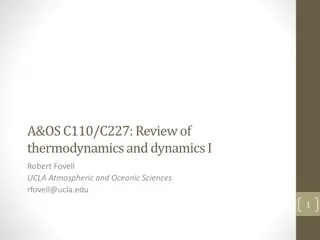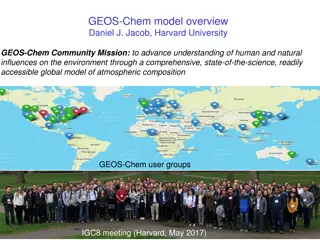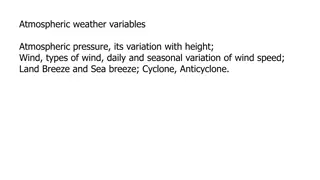Atmospheric System Research Overview for Understanding Earth's Climate
ASR utilizes ARM observations, lab studies, and process models to address key uncertainties in processes impacting Earth's radiative balance and hydrological cycle. By focusing on using observations to enhance understanding of atmospheric processes, ASR aims to improve climate models by refining existing parameterizations, identifying missing processes, and establishing multiscale relationships through open lines of communication.
Download Presentation

Please find below an Image/Link to download the presentation.
The content on the website is provided AS IS for your information and personal use only. It may not be sold, licensed, or shared on other websites without obtaining consent from the author.If you encounter any issues during the download, it is possible that the publisher has removed the file from their server.
You are allowed to download the files provided on this website for personal or commercial use, subject to the condition that they are used lawfully. All files are the property of their respective owners.
The content on the website is provided AS IS for your information and personal use only. It may not be sold, licensed, or shared on other websites without obtaining consent from the author.
E N D
Presentation Transcript
CT Department of Labor UI Revitalization Program IT Capital Investment Request 06/10/2015
CT Department of Labor UI Revitalization Program UI Revitalization is a business transformation initiative that will modernize and improve the Unemployment Insurance Tax and Benefits systems and business processes in order to gain the flexibility, security and adaptability required to provide improved service and sustained operational efficiency. Program Overview Key Components Migration to a Customer-Centric Service Delivery Model Implementation of a State of the Art System with Mobile Access Conversion of Mission Critical Agency Data Page 2
CT Department of Labor UI Revitalization Program Staffing Levels Exceed Federal Administrative Funding Levels Existing service levels cannot be maintained without process automation Failure to automate will cause the service delivery gap to widen over time without state or other funding to subsidize Federal budgetary allocations Limited Integration Between Business Divisions Current workflow requires numerous manual hand-offs within and across divisions Redundant data entry resulting in additional QA review and error corrections Extended service timelines are a barrier to meeting customer expectations and meeting Federal performance standards Business Drivers Staff-Centric Delivery Model Customers have limited ability to transact with the Agency outside of direct contact mechanisms (e.g. Phone, Forms, etc.) Customers have limited flexibility to transact outside of Agency hours for many of their needs Page 3
CT Department of Labor UI Revitalization Program A New UI Tax and Benefits System Seamless Integration Between UI Tax, Benefits and Appeals Improved UI Product Quality Greater Flexibility and Ease of Maintenance State-of-the-Art Security Protocols Improved Information Sharing Amongst State Agencies and others Higher Operational Efficiency User-Friendly System Reduction in Manual Operations Increased Compliance with USDOL Performance Goals Improved Staff Retention and Morale Business Benefits Customer-Centric Delivery Model Expanded Self-Service Capabilities for Claimants and Employers 24/7 On-Line Access to Information and Services Mobile Access to Information and Services Reduced Wait Times and Increased Customer Satisfaction Page 4
CT Department of Labor UI Revitalization Program Aging Technology Current System is 25+ Years Old Major Component Hardware/Software No Longer Supported by Manufacturers Technological Advances Have Surpassed the System Capabilities Shrinking Resource Pool for Maintaining Legacy Systems Technology Drivers Limited Integration of IT Services Mission Critical Legacy Systems are Stove Piped Non-Existent Framework for Data Integration Minimal Business Intelligence Opportunities Prohibits Timely and Cost Effective Changes from Federal Mandates High Cost of Maintenance Agency Maintains Its Own Data Center Systems Have Become More Complex and Difficult to Support Over the Years Page 5
CT Department of Labor UI Revitalization Program Migration From Mainframe Centric to Contemporary Technology Integration of IT Services and Delivery Methodologies Reduced IT Operating Costs Through Leveraging of Shared Services Improved Speed and Agility in Response to Federally Mandated Program Enhancements Expanded Data Environment, Business Intelligence and Reporting Capabilities Technology Benefits Page 6
CT Department of Labor UI Revitalization Program UI Revitalization - Program Phases Phase 2 (In Progress) Phase 3 Phase 1 (Completed) Phase 4 Oct. 13 Mar. 15 Apr. 15 2016* 2017* 2018* 2018* 2019* Note: Dates marked with an asterisk are estimated and dependent upon the timing of CT joining MRM Program Phases Current State Documented To-Be State Defined Development Options Defined IT Capital Investment Submission MRM Fit/Gap Analysis SBR Submission Begin Operational Readiness Begin Data Migration Begin UI Legacy System Retirement Planning MRM Formal On-Boarding IT Capital Investment Submission (TBD) SBR Submission (TBD) Operational Readiness Benefits/Appeals System Implementation Tax System Implementation Data Migration/Conversion IV&V Operational Readiness UI Legacy System Retirement P R O G R A M G O V E R N A N C E Page 7
CT Department of Labor UI Revitalization Program Phase 1 Cost of $3.6M Included Agency Staff and Consultant Services for Project Management and UI System Modernization Expertise Not Seeking Funding for This Phase Phase 2 Cost of $3.5M $1.17M Requested From the IT Capital Investment Program for Consultant Services Project Management and Data Migration $2.33M Agency Share Includes Staff Costs Program Budget Phases 3 & 4 Costs Dependent Upon Outcome of Phase 2 System Development Costs Estimated at $10M - $15M Seeking Federal Funding May Submit a Future IT Capital Investment Request to Cover Any Possible Gap in Funding Page 8
